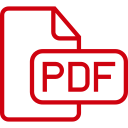
ad here
905 Download
1 year ago
Operating System Concepts 10th Edition PDF Free Download, operating system concepts latest edition.
The operating system plays a crucial role in a computer system, which consists of hardware, software, and data. It functions like a government, providing an environment for other programs to perform useful work. The user’s view of the computer varies depending on the interface used, with some focus on performance and security and none on resource utilization. The operating system’s role is to maximize the user’s work and ensure the proper use of resources.Operating systems are essential for managing the resources and functions of a computer system, which is increasingly used by users on mobile devices like smartphones and tablets. These devices are connected to networks through wireless technologies and feature touch screens for user interaction. Some computers have little or no user view, such as embedded computers in home devices and automobiles. An operating system acts as a resource allocator, managing CPU time, memory space, storage space, and I/O devices to solve problems efficiently and fairly. The term “operating system” covers many roles and functions due to the diverse designs and uses of computers. The history of computers demonstrates their rapid evolution, from experiments to fixed-purpose systems for military and governmental purposes.
Operating-System Services are essential for efficient system operation and performance. They involve communication, error detection, resource allocation, logging, protection, and security. Communications can occur between processes on the same computer or between different systems tied together by a network. Error detection is crucial for correct and consistent computing, and the operating system should take appropriate action for each type of error.Resource allocation is another important aspect of operating-system services, managing various types of resources such as CPU cycles, main memory, and file storage. CPU-scheduling routines consider factors like CPU speed, process execution speed, and CPU core number. Logging helps track usage statistics and improves computing services.Protection and security are also crucial in multiuser or networked computer systems. Ensuring control over access to system resources and preventing external interference are essential. Security starts with requiring each user to authenticate themselves. Overall, operating-system services are essential for maintaining a smooth and efficient system.However, there is no definitive definition of an operating system, as it varies in function and size.
Design goals and specifications are crucial in designing and implementing an operating system. The highest level of design depends on hardware and system type, while requirements can be divided into user goals and system goals. Users want convenience, ease of use, reliability, safety, and fast, while developers need flexibility, reliability, error-free, and efficiency. There is no unique solution to defining requirements for an operating system, as different requirements can result in different solutions for different environments. Specifying and designing an operating system is a creative task, with no textbook providing a clear guide.
One important principle is the separation of policy from mechanism, which determines how to do something and what will be done. This separation is important for flexibility, as policies can change across places or over time. A general mechanism that is flexible enough to work across a range of policies is preferable.Microkernel-based operating systems take this separation to one extreme by implementing a basic set of primitive building blocks that are almost policy-free. This allows for more advanced mechanisms and policies to be added via user-created kernel modules or user programs.Implementation is a crucial aspect of operating systems, as they are collections of many programs written by many people over a long period of time. Most operating systems are written in higher-level languages like C or C++, with small amounts of assembly language.
Debugging is the process of finding and fixing errors in a system, both in hardware and software. Performance problems are considered bugs, and debugging can also include performance tuning, which aims to improve performance by removing processing bottlenecks. This section explores debugging process and kernel errors and performance problems.Failure analysis is crucial in operating systems, as it allows programmers to explore the code and memory of a process at the time of failure. Operating-system kernel debugging is even more complex due to the kernel’s size, complexity, and lack of user-level debugging tools. A kernel failure in the file-system code is risky, so a common technique is to save the kernel’s memory state to a disk area that contains no file system.Performance monitoring and tuning aim to improve performance by removing processing bottlenecks. Tools can provide either per-process or system-wide observations, using either counters or tracing. Counters track system activity through a series of system calls or operations performed on a network device or disk.Counter-based tools on Linux and Windows use the /proc file system for querying per-process and kernel statistics. This pseudo file system is organized in a directory hierarchy, with processes appearing as subdirectories below it. Windows systems offer the Windows Task Manager, which includes information on applications, processes, CPU and memory usage, and networking.
OS Concepts is a textbook on Operating Systems that is very dry and difficult to stay awake to read. It is slightly less dry and conversational than Gary Nutt’s “Modern Operating Systems” but doesn’t compare to Nutt’s book in presentation and readability. The book’s tone is all over the place, with some chapters feeling like “Operating Systems for Dummies” and others like lengthy tomes on designing an operating system. It comes in two flavors: regular and Java, with Java-specific sections added at the end of each chapter. While it is not a bad book, it doesn’t cater to the audience for nitty-gritty OS design. For a more conversational and readable book, stick with Tanenbaum’s classic text, while Silberschatz’s book falls somewhere in the middle and is as effective as neither.
| PDF Name: | Operating-System-Concepts-10th-Edition-2018_booksfree.org_ |
| Author : | Pdf Plus |
| File Size : | 11 MB |
| PDF View : | 56 Total |
| Downloads : | 📥 Free Downloads |
| Details : | Free PDF for Best High Quality Operating-System-Concepts-10th-Edition-2018_booksfree.org_ to Personalize Your Phone. |
| File Info: | This Page PDF Free Download, View, Read Online And Download / Print This File File At PDFSeva.com |
Copyright/DMCA: We DO NOT own any copyrights of this PDF File. This Operating System Concepts 10th Edition PDF Free Download was either uploaded by our users @Pdf Plus or it must be readily available on various places on public domains and in fair use format. as FREE download. Use For education proposal. If you want this Operating System Concepts 10th Edition to be removed or if it is copyright infringement, do drop us an email at [email protected] and this will be taken down within 24 hours!
© PDFSeva.com : Official PDF Site : All rights reserved
